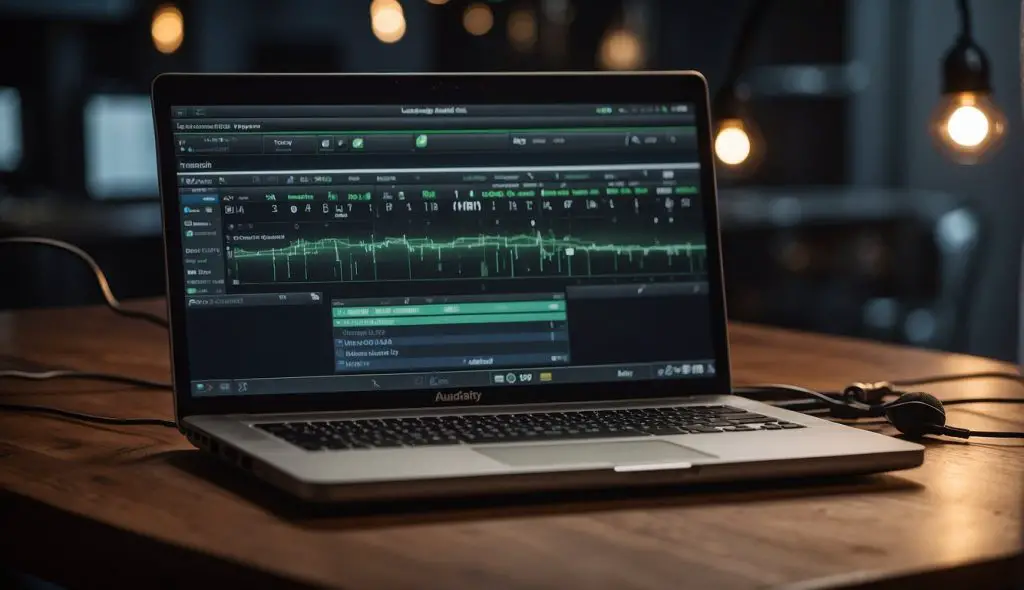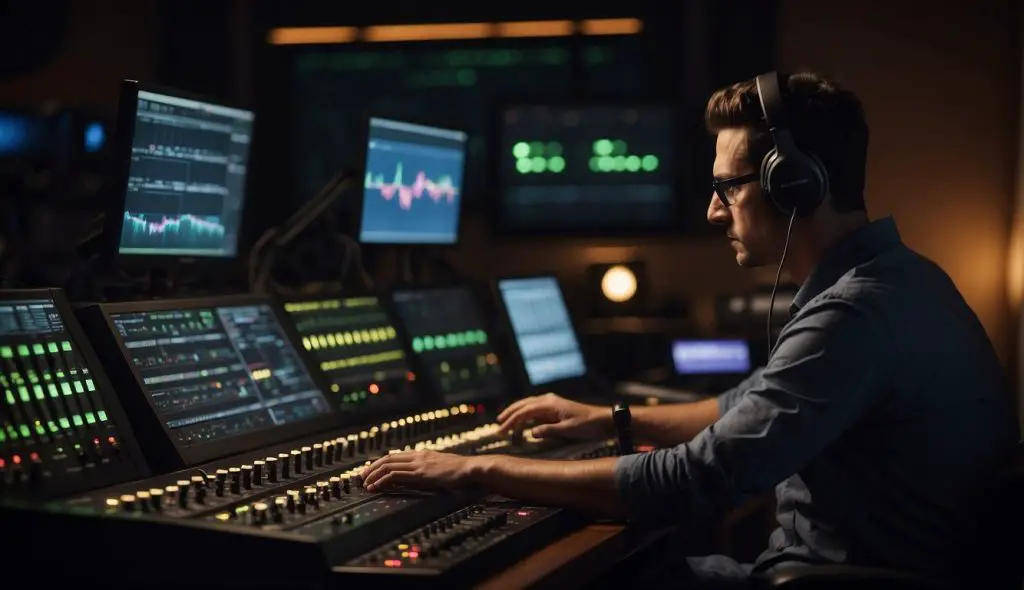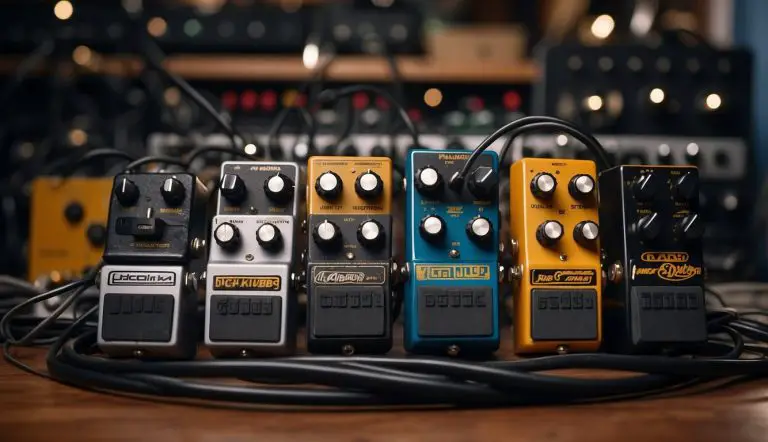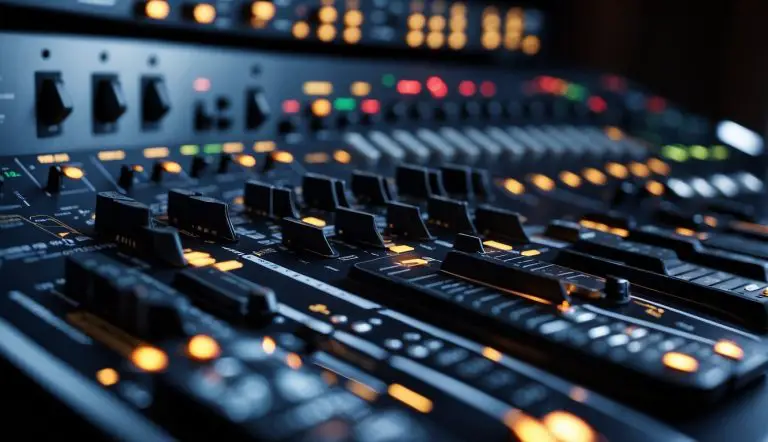Is Audacity Good for Your Audio Editing Needs?
When assessing the quality of Audacity, the free audio editor, it goes without saying that its accessibility is one of its most remarkable features.
As a fully free and open-source software, it provides a comprehensive set of tools for recording, editing, mixing, and mastering audio files.
For beginners and those looking to work on audio projects without a significant investment, Audacity proves to be a beneficial tool. Its user-friendly interface welcomes novices, yet it is powerful enough to satisfy the requirements of more experienced users.

With the ability to handle a variety of audio tasks, Audacity’s functionality extends to a robust set of features that are often found in premium software. It includes capabilities for multitrack editing, noise reduction, and a spectrum of effects.
Its plug-in subsystem allows for expandability, ensuring the software can grow with the user’s needs. Moreover, the supportive community and abundance of learning resources ensure that help and guidance are readily available, making the journey of learning and mastering Audacity a less daunting endeavor.
Key Points
- Audacity is an accessible and free tool for audio editing.
- The software includes features suitable for beginners and advanced users.
- It has strong community support and numerous learning resources available.
Table of Contents
Exploring Audacity
I’ve found Audacity to be a versatile tool in my audio editing toolkit. It’s well-suited for anyone from hobbyists to professionals looking for a cost-effective solution. Here’s a closer look at what makes Audacity stand out.
Free and Open-Source Software
When I first began using audio editing software, the fact that Audacity is both free and open-source was a significant advantage, as it allowed me to use full-featured software without an initial investment. The open-source nature means that the code is publicly accessible, which encourages community collaboration and continuous improvement.
User Interface and Experience
Initially, I was impressed by Audacity’s user interface (UI), which is straightforward and functional. Through its UI, I can easily navigate and access a range of editing tools.
Waveforms are clearly visible, making it simpler for me to manipulate audio tracks. While some users may find the UI less modern compared to commercial options, I appreciate its simplicity and efficiency.
Audio Formats and File Support
In terms of file support, here is a table highlighting the formats Audacity works with, which I’ve found to be quite comprehensive for my projects:
| Format | Supported? |
|---|---|
| WAV | Yes |
| AIFF | Yes |
| MP3 | Yes |
| Ogg Vorbis | Yes |
| FLAC | Yes |
| AU | Yes |
| AC3 | Yes |
The ability to work with these various audio formats, such as .wav, .mp3, and .flac, without needing other conversion tools is a huge plus in my workflow. Audacity’s support for these formats makes it a versatile option for managing and editing audio files.
Is Audacity Good for Beginners?
When I first dipped my toes into audio editing, I discovered Audacity. I found it to be quite user-friendly, which is great for someone just starting out. So, yes, from my experience, Audacity is indeed good for beginners.
Audacity’s interface is straightforward. When I launched it, I saw a clean workspace with clearly labeled functions, which made it less intimidating for me. The toolbars are customizable, so I could keep the features I used most often close at hand.
Here’s a simple rundown of why I consider Audacity suitable for beginners:
- Cost-Effective: Being an open-source platform, it’s free, which is perfect when you’re experimenting and not ready to invest in software.
- Essential Tools: It provides the essential tools needed for good-quality audio editing. I could record, cut, copy, splice, and mix sounds effortlessly.
- Helpful Resources: There’s a solid community support system, with plenty of tutorials and guides available.
| Feature | Description |
|---|---|
| Ease of Use | Simple, intuitive interface. |
| Functionality | Offers basic tools needed for audio editing. |
| Support | Extensive community forums and tutorials. |
As I improved, I noticed Audacity might not have all the advanced features that professional software offers, but for me, as a beginner, it had enough to practice and accomplish basic to moderately complex projects.
If someone asked if Audacity is overwhelming for new learners, I’d emphatically say no. It’s a solid starting point to get acquainted with audio editing.
Recording and Editing Features
When I dive into Audacity, I discover a robust set of tools for both recording and editing audio. It’s like having a personal studio that’s both intuitive and capable, right at your fingertips.
Multitrack Recording Capabilities
Audacity offers multitrack recording capabilities, allowing me to layer several audio tracks. This feature is fantastic for complex projects, like music production or podcast creation, where I need to handle different audio sources.
Whether I’m working with mono or stereo tracks, Audacity ensures that each track maintains its quality.
- Mono Recording: Single-channel, suitable for voiceovers or single instruments.
- Stereo Recording: Two channels, ideal for capturing a more realistic soundstage.
Effects and Plugins
The strength of Audacity lies in its vast range of effects and plugins. From EQs to reverb, I find that adding these audio effects to my project is a breeze.
Additionally, with support for various third-party plugins, my palette for audio manipulation expands significantly.
- Built-In Effects: Compression, noise reduction, and more.
- Third-Party Plugins: VST, AU, and other formats for added versatility.
Editing Tools Overview
Audacity’s editing tools are straightforward yet powerful. The basic functionalities like trimming, cutting, and deleting unwanted sections are intuitive.
But beyond that, there are advanced features like the envelope tool, which lets me fine-tune the volume within a track.
The ability to manipulate samples one by one or in large sections provides me with detailed control over my audio project.
- Trimming/Cutting: Remove unnecessary parts efficiently.
- Sample Editing: Precise adjustment at the sample level.
Mixing and Post-Production

In my experience with Audacity, I’ve found that it excels in certain aspects of mixing and post-production, mainly for its user-friendly interface and the variety of tools it provides that cater to podcasters, musicians, and filmmakers alike.
Advanced Editing Functions
Audacity’s interface allows me, as a user, to handle complex editing tasks efficiently. Its real-time effects enable me to apply and listen to audio effects on the fly.
This feature is especially helpful during the mixing process when trying to balance levels and apply effects to audio tracks seamlessly.
Moreover, Audacity supports VST plugins, which expands my repertoire of audio effects, allowing me to enhance my projects with professional-grade processing.
For spectral editing aficionados, Audacity offers the Spectrogram view, which allows me to identify and manipulate frequencies visually.
This is an indispensable tool for identifying noise frequencies and correcting pitch issues.
Additionally, Audacity’s robust audio production capabilities enable me to work with multitrack recording projects, mix down effectively, and manage the overall sound of a podcast or music track with relative ease.
Exporting and Sharing Options
When it comes to sharing my audio creations, Audacity provides straightforward and versatile exporting options.
I can export my final mix in various formats, including MP3, WAV, and other popular file types, which ensures compatibility with different distribution platforms.
This feature is crucial because it allows me to meet the requirements of the medium my audio is destined for, whether it’s a podcast platform, social media, or a film distribution service.
Additionally, the DAW allows me to export multiple files at once, which saves me time, especially when I’m dealing with multiple versions or segments of a podcast or album.
The batch processing feature comes in handy when exporting files with the same format and quality settings, as it streamlines my workflow considerably.
Learning and Community Resources

I’ve discovered that Audacity is not just an audio editing tool; it’s a gateway to a multitude of learning opportunities and community-driven support resources.
From my experience, beginners to experts can benefit, whether they are looking to enhance an educational project, start a podcast, or delve into music production.
Tutorials and Learning Curve
When I first started using Audacity, I was pleasantly surprised by its gentle learning curve.
Beginners can quickly get the hang of basic features with the help of tutorials available on the Audacity website and across the internet on platforms like audio.com.
I found a structured array of tutorials — from basic editing to advanced effects — which have been instrumental in my learning:
- Quick Start Guides: For those who are new to audio editing
- Step-by-Step Tutorials: Focused guidance for common tasks in Audacity
- Video Demonstrations: Visual learners can follow along with experts
Community and Support
The community support around Audacity is a remarkable treasure trove. On the official website, there’s a forum where I’ve seen a welcoming community ready to assist with all kinds of queries.
Here’s where students, educators, and organizations converge:
- User Forums: Places where I asked questions and shared tips with fellow users
- FAQs and Wikis: Comprehensively answered common inquiries that I had
- Affiliated Networks: Collaboration with organizations and educational institutions that can extend support beyond the online resources
–Awards: While I haven’t won any awards with my Audacity projects, I know the platform has been recognized for its excellence. This speaks to the quality of the tool and the resources provided.
Throughout my journey, the combination of easily accessible tutorials and an active support community has made learning Audacity both achievable and enjoyable.
Frequently Asked Questions
In my experience using Audacity, I’ve found that its capabilities as a free, open-source audio editing tool are quite impressive. Now, let’s answer some commonly asked questions about Audacity.
What are the advantages of using Audacity for podcasting?
Audacity is incredibly user-friendly for beginners in podcasting. I’ve noticed that it offers a wide array of editing features, which are perfect for fine-tuning audio tracks. Since it’s free, it’s very accessible to anyone starting out.
Can Audacity be considered a professional tool for music production?
While Audacity doesn’t have all the features of high-end professional software, it is still quite resourceful for music production. It caters to the basics well, and I’ve successfully used it for multiple projects that require multi-track recording and complex editing.
What are the potential drawbacks of using Audacity for audio editing?
One limitation I’ve encountered with Audacity is its lack of advanced features seen in professional-grade software, like real-time effects processing. It’s also not the most efficient for editing large or complex projects.
How well does Audacity perform for recording and editing vocals?
Audacity performs admirably for vocal recordings and editing. I find that its noise reduction and pitch correction tools are particularly useful for enhancing vocal tracks.
Is Audacity a suitable choice for YouTube content creators?
For YouTube content creators working on a budget, Audacity is a great choice. Its ability to improve audio quality with effects and processing aligns well with the needs of content creation for videos.
How does Audacity compare to other audio editing software in terms of safety?
From my own usage, Audacity seems very safe. It’s an open-source program developed by a community of volunteers.
Typically, open-source software is closely scrutinized. This can lead to higher security.




